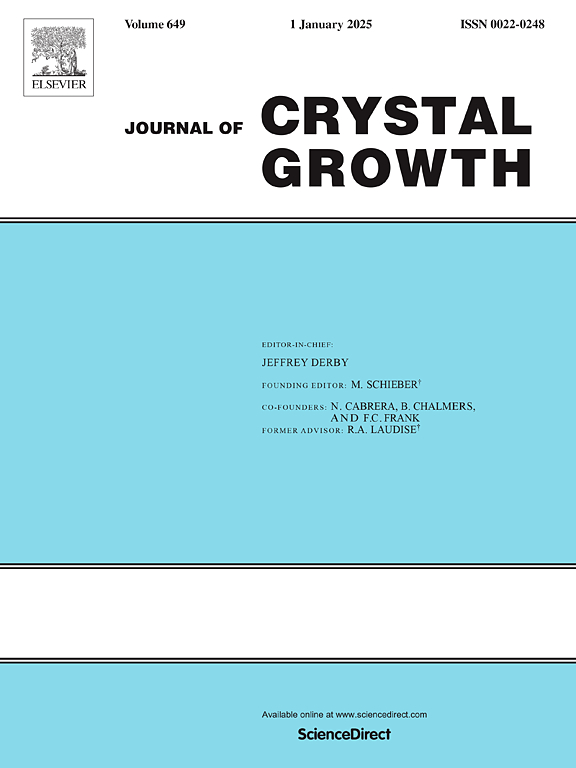强制循环结晶器中结晶-颗粒联合结垢动力学
IF 2
4区 材料科学
Q3 CRYSTALLOGRAPHY
引用次数: 0
摘要
零液体排放技术中FC结晶器的热交换器由于在管表面沉积悬浮颗粒和溶解离子而导致效率降低。本研究利用区室模型,包括成核、生长、溶解和磨损,来研究FC热交换器中碳酸钙的结晶和颗粒污染。研究了换热器管内表面沉积层对传热和结晶器效率的影响。结果表明,碳酸钙溶液中的过饱和触发了体流中的初级成核过程,使其具有进一步过饱和的能力。过饱和度在约2000秒后(从约1降至0.3以下)降低,导致最小程度的结晶结垢。通过成核活化,增加了碳酸钙晶体核的数量,促进了颗粒沉积机制。并对循环流量、操作温度、碳酸钙进料浓度、吹扫流量、结晶器效率等相关参数进行了探讨。循环流量和冷凝器温度是影响颗粒结垢的主要因素。本文章由计算机程序翻译,如有差异,请以英文原文为准。
Combined crystallization-particulate fouling dynamics in a forced circulation crystallizer
The heat exchanger of a FC crystallizer in Zero Liquid Discharge technology suffers reduced efficiency due to the deposition of suspended particles and dissolved ions on the tube surfaces. This research utilized a compartmental modeling, encompassing nucleation, growth, dissolution, and attrition, to examine the crystallization and particulate fouling of calcium carbonate in a FC heat exchanger over time. The impact of the deposit layer developed on the inside surface of the heat exchanger tube on heat transfer and crystallizer efficiency was examined. The results indicated that supersaturation in the calcium carbonate solution triggered the primary nucleation process in the bulk flow, rendering it resistant to further supersaturation. The reduction in supersaturation after about 2000 s (from about 1 to below 0.3) leads to a minimal degree of crystallization fouling. The increased number of calcium carbonate crystal nuclei via nucleation activation, facilitates particulate deposition mechanisms. Furthermore, several relevant parameters, including circulation flow rate, operating temperature, calcium carbonate feed concentration, purge flow rate, and crystallizer efficiency were explored. The circulation flow rate and condenser temperature were determined to be the principal factors affecting particulate fouling.
求助全文
通过发布文献求助,成功后即可免费获取论文全文。
去求助
来源期刊

Journal of Crystal Growth
化学-晶体学
CiteScore
3.60
自引率
11.10%
发文量
373
审稿时长
65 days
期刊介绍:
The journal offers a common reference and publication source for workers engaged in research on the experimental and theoretical aspects of crystal growth and its applications, e.g. in devices. Experimental and theoretical contributions are published in the following fields: theory of nucleation and growth, molecular kinetics and transport phenomena, crystallization in viscous media such as polymers and glasses; crystal growth of metals, minerals, semiconductors, superconductors, magnetics, inorganic, organic and biological substances in bulk or as thin films; molecular beam epitaxy, chemical vapor deposition, growth of III-V and II-VI and other semiconductors; characterization of single crystals by physical and chemical methods; apparatus, instrumentation and techniques for crystal growth, and purification methods; multilayer heterostructures and their characterisation with an emphasis on crystal growth and epitaxial aspects of electronic materials. A special feature of the journal is the periodic inclusion of proceedings of symposia and conferences on relevant aspects of crystal growth.
 求助内容:
求助内容: 应助结果提醒方式:
应助结果提醒方式:


